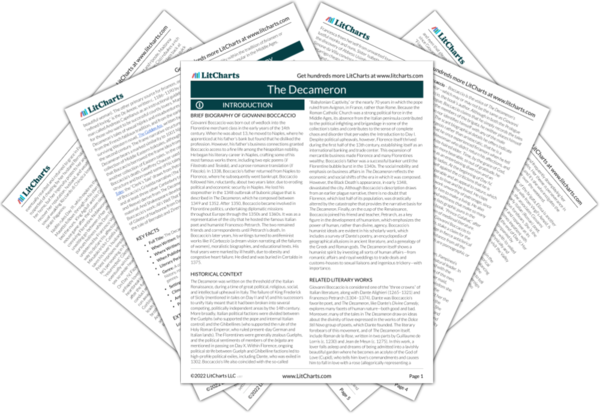The garden—an important symbol in the book—appears almost as soon as the
brigata leaves Florence. In their first resting place, the garden is a “hortus conclusus” or enclosed space, which alludes to both the Christian narrative of the Annunciation to the Virgin Mary—where the garden is a moral and sacred space symbolizing Mary’s virgin womb—and to medieval romances, where gardens are places for love. The fact that no one appears to be at this villa, yet it is still cleaned and prepared for visitors, highlights the contrast between the chaotic city and the peaceful life of the
brigata in the countryside. Not too far from Florence, the
brigata is reasserting order and moderation by setting up their own rational court—and because Pampinea represents reason, it’s fitting that she is the first sovereign.


